Summer brings on the battle against soil-dwelling insects, like grubs and chinch bugs, who chew their way through our warm-season grasses. Today’s blog will give you some insight into why it is ideal to treat for grubs right now, and how to discern if you have these prevalent pests in your lawn.


I answer to: June bug, May beetle, Phyllophaga crinita and the southern masked chafer (Cyclocephala lurida)… whatever you want to call me, just know my offspring can wreak havoc on your lawn in a hot minute.
What are White Grubs?
Grubs are the larval form of this little Chafer beetle (May beetle/June bug) pictured here to the left. The beetles mate late May – early June, then dive into the soil of your turf to lay their eggs. A couple weeks later, the eggs hatch into larva which begin eating, growing, and molting right away. Each time the grub larvae molts is called an instar. Grubs go through 3 instars during their development, with the 3rd grub instar being the most damaging to the roots of your turf. After all, each instar the grubs develop into increases their size and appetite!
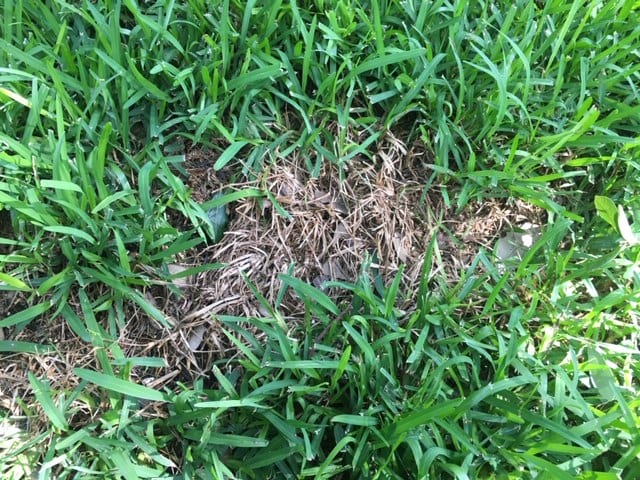

Irregular, brown spots like these mimic drought damage, but on closer inspection…
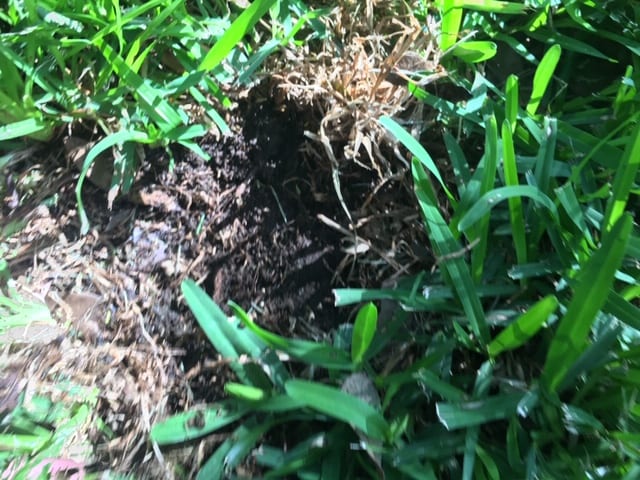

…this turf had no roots to hold the damaged runners to the soil. It was bascially “rolled back” like grass being rolled up and removed in a cartoon!
Identifying Grub Damage/Checking Turf for Grubs
1. Grub damage presents as irregular, brown patches in the turf (sometimes looks like drought damage at first).
2. Grub damage can also present as holes dug in the turf; raccoons, skunks, and armadillos find grubs to be delectable and dig through the lawn in search of them.
You can check your turf for certain tell-tale signs that you have grubs.
1. Inspect the damaged turf areas at the root level. Can you pick up the leftover, damaged grass easily, as if there are little to no roots still holding it in place? (We liken it to a cartoon toupee being easily lifted off of a bald head.)
2. Cut a square foot patch of turf (get some of the damaged area plus some of the healthier adjacent to it) and dig down about 4″. If you see 5 or more grubs in that area, treatment is warranted. ( I treat when I see 3!)
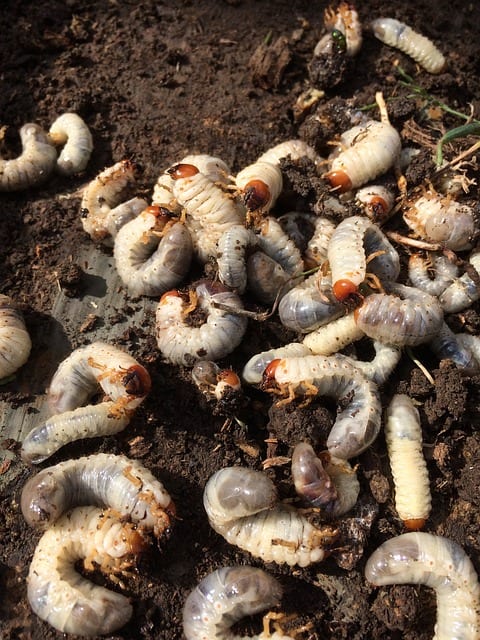

Holy 3rd instar! If you wait until grubs get this big, they’ve already eaten huge patches of your turf from the roots up!
Prevention for Grub Damage
Prevention of grubs begins with knowing when grubs generally show up. For us in South Texas, the June bugs usually show up late May and begin their mating flight around our porch lights at that time. A couple weeks later grubs are hatched in the soil and begin searching out the roots of our turf to feed on.
This makes mid June the ideal time to treat for grubs in San Antonio. By applying your insecticide mid June, you treat the grubs right as they hatch, or while they are in their earlier instar phases, preventing them from doing as much damage as they would in their final instar stage.


Yes, this tiny sponge can cover 2,000 – 3,000 sq. ft. Good things DO come in small packages. Find them at our Thousand Oaks location. *See note to the right for effectiveness during hot weather.
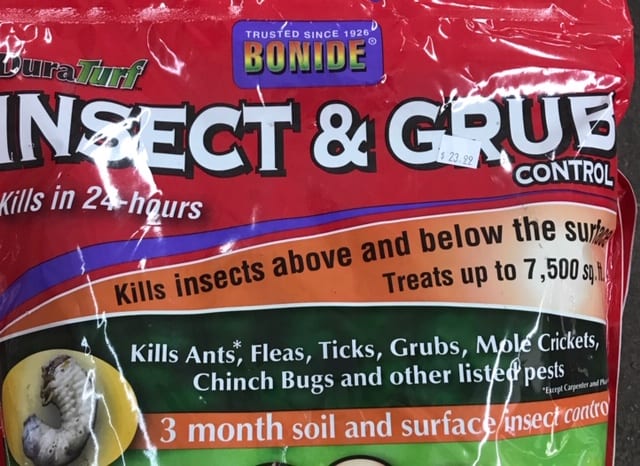

These granules have the active ingredient, imidacloprid, you’d be looking for. This bag also covers other soil-dwelling pests like chinch bugs, which you know are on their way to ravage your lawn next!
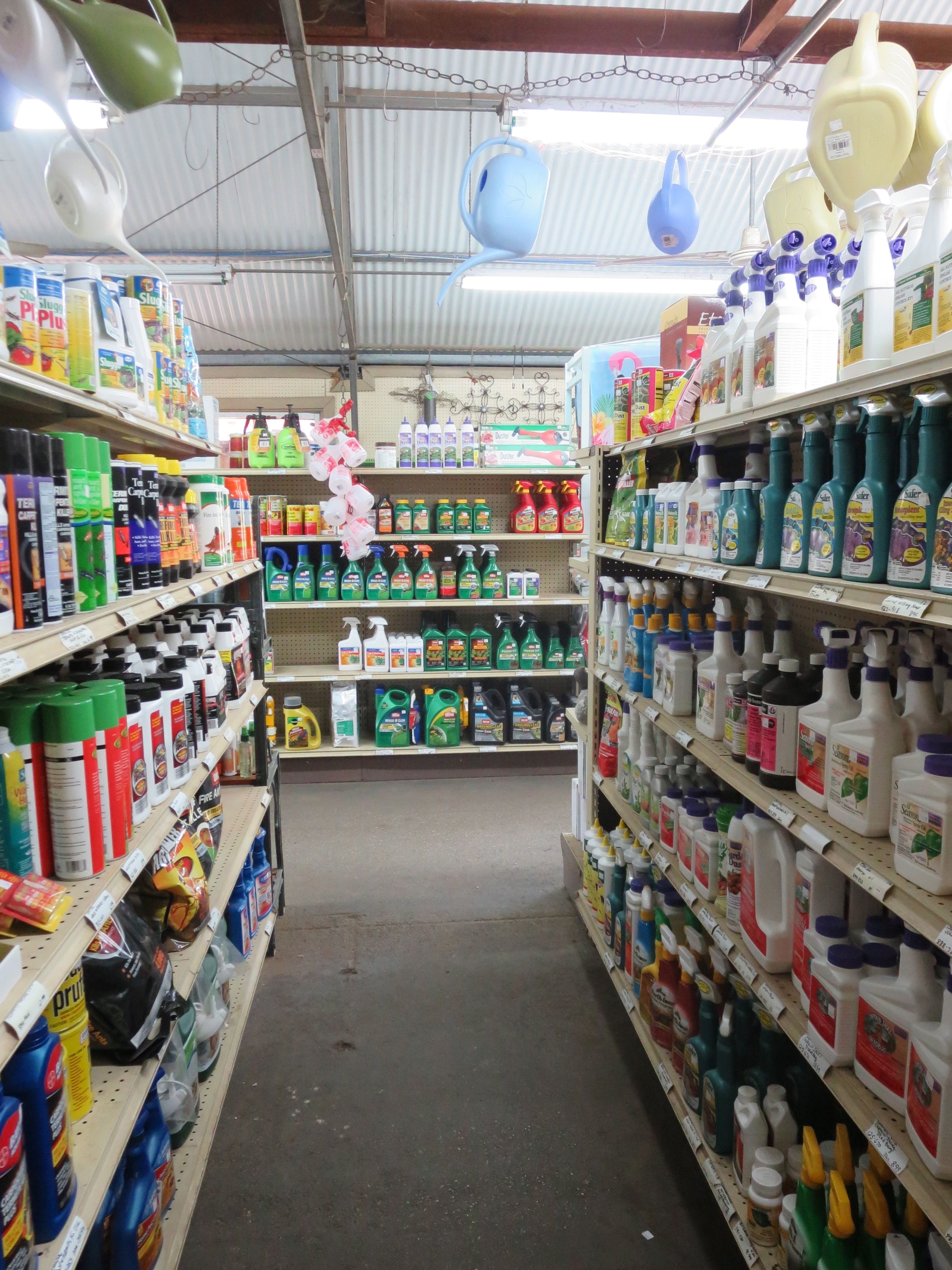

Let us show you the product that is right for you!
Treatment Options for Grubs in Warm Season Turf
There are both organic and synthetic controls for grubs in the lawn.
1. Beneficial nematodes for organic Grub Control: These microscopic powerhouses swim through the soil and burrow straight into the bodies of soil-dwelling pests where they basically kill the pests by eating their way through them from the inside out. (Currently only at our Thousand Oaks location.) **NEMATODES ONLY REMAIN EFFECTIVE IN THEIR PARASITIC STATE WHILE SOIL TEMPS ARE IN THE RANGE OF 42°F – 95°F.** Because of our hot temperatures in summer, nematodes aren’t always available in the nurseries.
They begin to work within 24-48 hours when correctly applied. They also multiply rapidly and send out army upon army to devour many soil-dwelling pests. Since they are “swimmers” it’s imperative to give them a moist environment before, during, and after application. Watering your lawn adequately will prolong their life and the time they can provide grub and other pest control.
2. Systemic Insecticide for Synthethic Control of Grubs: When temperatures are too high for nematode application, granular and liquid insecticides are available for control of soil-dweling pests like grubs. You should be looking for a product with the active ingredient imidacloprid on the label. We usually suggest a granular form if choosing a synthetic, since spraying insecticides, pesticides, herbicides in summer heat can cause extra damage to turf and plants. (If you choose a liquid, spray only in early morning, cooler hours.)
Imidacloprid is a systemic insecticide. It is applied and watered into the soil of your turf. Your turf takes up the insecticide from the soil through its roots, and the insecticide spreads throughout all parts of the turf. When grubs eat at the roots of your turf, they ingest the insecticide, which damages their nervous system and eventually kills them.
There are many different products that contain imidacloprid, so come see us and we can offer the best for your circumstances. (Some come with a turf revitalizer ingredient, that you may not need if you already fertilized in spring (excess nitrogen applied in hot weather can bring about gray leaf spot fungus).) Let Rainbow Gardens steer you in the right direction.
Although nematodes are ferocious and voracious with their appetites, you have to be careful with the containers you use to apply them. Choose a sprayer that has not been used for any other purpose. No fertilizer, fungicide, insecticide, pesticide, or herbicide!
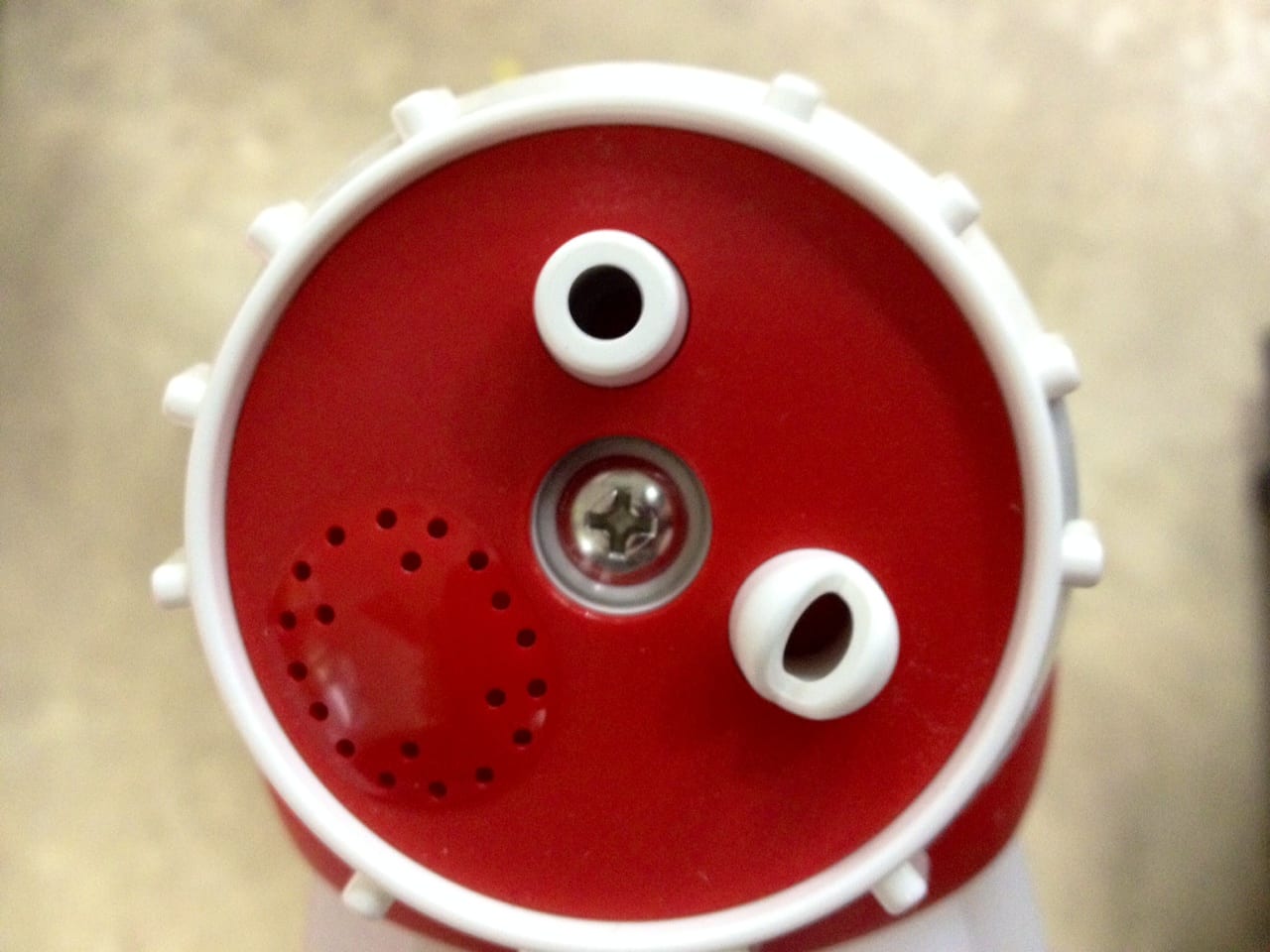

A hose-end sprayer works great for dispersing nematodes. Especially one with adjustable flow.Follow our release instructions here: How To Apply Nematodes.
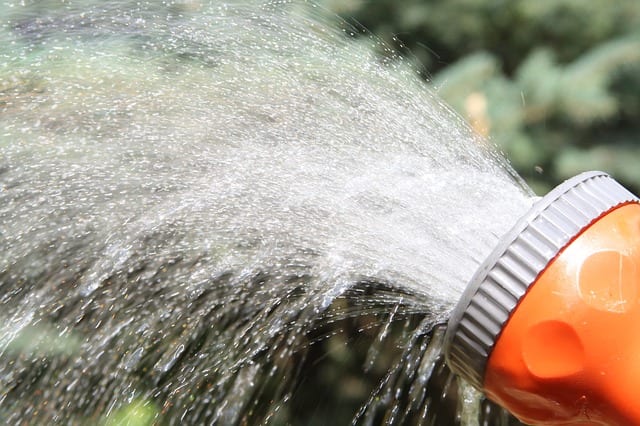

You will need to apply extra water to keep nematodes effective at grub control in hot temperatures. *See note in bold above right about temperture and effectiveness.
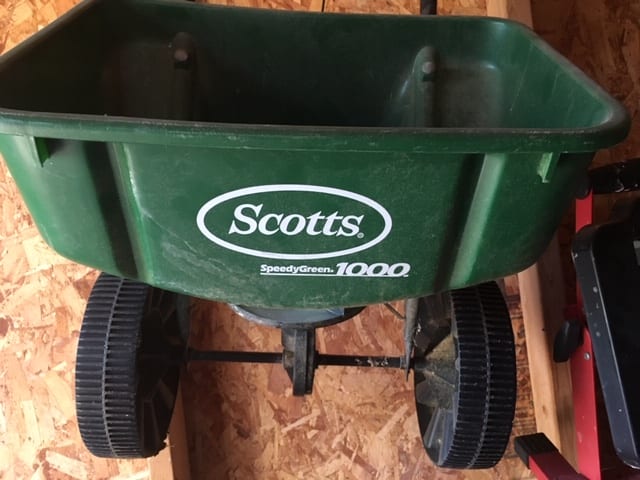

It is super important that you read the grub control label on the bag of your product…in it’s entirety! Really, this label gives instructions for: calibrating your spreader for the right coverage, if and how often you need to reapply, rain fastness, directions for initially applying the product, precautionary statements (when safe for pets, etc…)
(Extra Advice For Applying Grub Control)
Whichever method you decide to use for grub control, it is imperative that you adhere to the following advice:
Best Practices for Applying Beneficial Nematodes:
- Water lawn the day before applying nematodes. This brings grubs closer to the surface; easier access for nematodes to penetrate! Offer a dry lawn at least 1/2″ of water.
- Apply in the early morning or low-sun-exposure evening hours(see how to apply here) and then thoroughly water after applying. The more water the better with this type of pest control.
- Follow up with watering your lawn every 3-4 days if no rain present to keep the nematodes swimming and conquering the grubs.
- A second application can be made 1-2 weeks after the first for best results.
Best Practices for Applying Systemic Insecticide:
- Water lawn the day before applying insecticide. This brings grubs closer to the surface; easier access for insecticide to penetrate! Offer a dry lawn at least 1/2″ of water.
- Liquid Systemic Insecticide needs to be watered immediately post-application or before product has dried. Granular Systemic Insecticide will only become active once it has been watered in, so it is recommended to do so immediately after applying the grub control product.
- ALWAYS read entire label of whatever product you choose for precautionary statements, follow-up application, and the rate at which to apply product (this goes overlooked so often!)
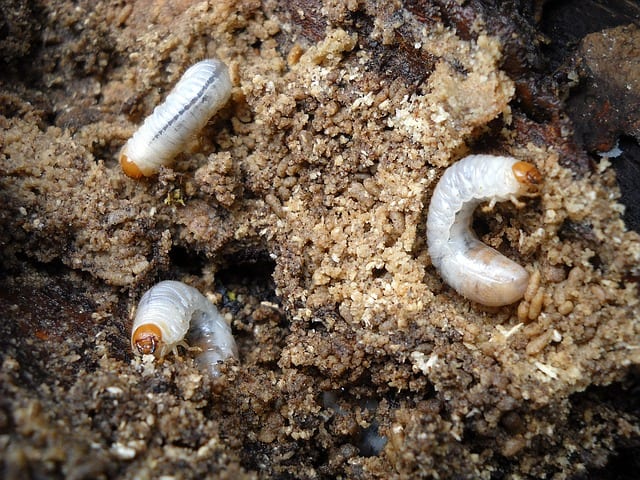

Good luck, and good riddance to your grubs!
“I’m a June Bug, a June Bug, I’m roly poly round. Looking for love, yeah, looking for love and I know it’s flying around.”-from June Bug by Bill Simmons
~The Happy Gardener

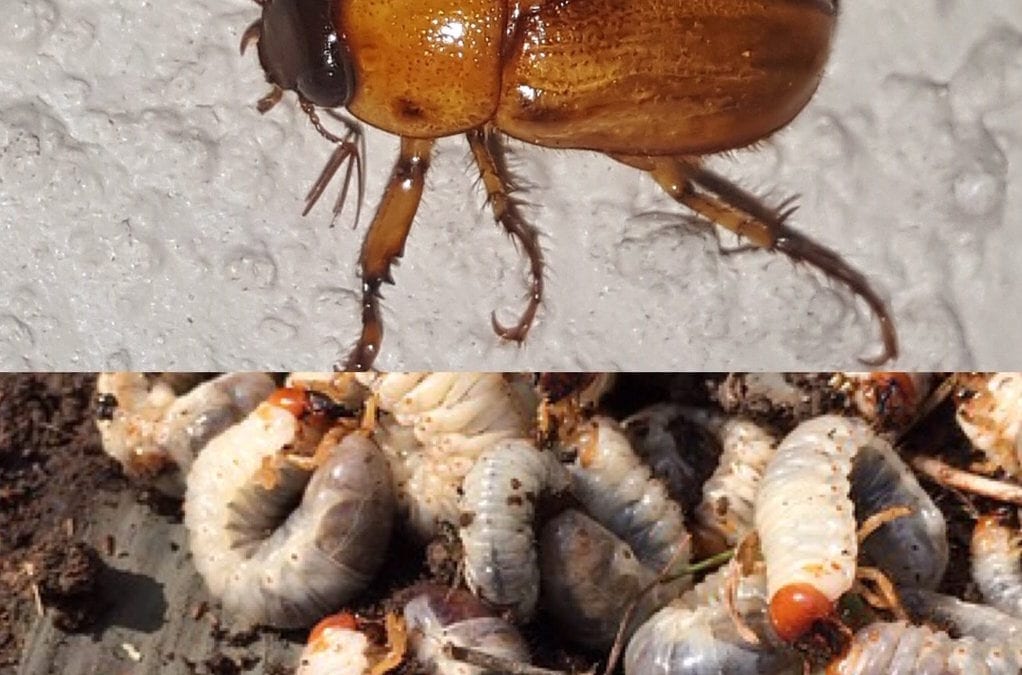
Thank you for explaining the different lawn critters. I think I have a couple of these plaguing my yard. I think I will hire an n extermination service to take care of it.
Yes ma’am, and thank you for reading. Be sure to ask the company what product they are using and for what pests, they should be able to answer you if they are reputable, and also ask if you’ll need a follow up treatment for the whole life cycle of the pests. We are always happy to have you come in and we can talk you through what you need and how apply products if you’d like as well! thanks for reading! https://www.rainbowgardens.biz/about-us/#store-info
I appreciate all your information! We are trying to make sure our lawns are looking good and healthy. Because we’re up in years and rely on the pros, what would you say is a legitimate cost of getting rid of all the underground munchers?
Arlene,
That’s really hard to judge. It depends on what types of treatments they are offering and how big of an area they are treating. A 10lb. bag of granular pesticide that covers 5,000 sq. ft may cost anywhere from $15.00 – $25.00. Liquid forms are generally pricier. An organic sponge of beneficial nematodes that covers 2,000-3,000 feet might cost about $19.00 and continues to work as long as lawn is watered regularly. Some insecticide treatments require follow up applications so you would need to double price, or take that into account. But without knowing what pests you have, treatments the professionals are offering, and how often, it’s difficult to put a blanket. plus you pay for their service and work hours too.
Thank you, I guess I need confirmation that I wasn’t being had. There always saying seniors are forever buying into things they shouldn’t. 🙄
My lawn is ruined by foxes searching for these grubs I have used treatment without success where can I buy your product I live in the uk
Sheila,
I’m sorry your lawn has been dug up. I would research where you can find the products listed in the blog in the UK. I am not familiar with which companies sell these products over there, but I think maybe a google search, “where can I find…” might help. Any local garden retailers around you?
Thank You